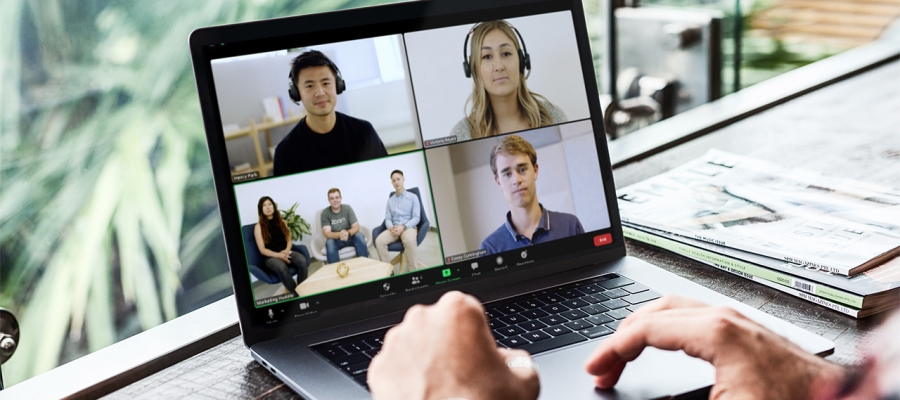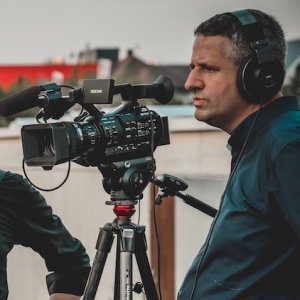5 Video Tools that can Help Make your Virtual Event Better

The pandemic has forced events teams all around the world to rethink their real-life events and instead opt to host virtual events. This move to online events has been made easier by the wide array of software and web apps currently available that is aimed at the events industry - everything from virtual ticketing and paywalls, through to chat and engagement tools.
However, arguably the most important aspect of taking an event into a virtual space is video, including live streaming. Luckily there are also plenty of tools and platforms that allow you to easily get started, some of which are free to use.
Below we take a look at five of the most powerful and widely used video tools that can help you produce your first virtual event with ease.
Zoom
Most people think of Zoom as nothing more than a virtual meeting tool which allows you to host video chats, but go pro and the platform can provide you with a closed-door virtual event streaming solution. The free and basic packages allow you to host events with up to 100 participants, but upgrade to the business and enterprise plans and you can invite up to 500 people to watch your live stream.
Streamyard
Streamyard is another great tool for streaming your event. Unlike Zoom there is no need for virtual event attendees to download and install any software as the tool kicks out your stream to public platforms such as Facebook Live, and YouTube - you can even multistream to various locations without any additional strain on your internet connection. Streamyard is like a one-stop online television studio allowing you to invite and collaborate with up to 10 guest speakers, but since your broadcast will stream to third-party platforms like YouTube, there's no limit to how many people you can have watching. If you need your stream to be behind closed doors and ticketed, then Streamyard will allow you to push your content to custom streaming servers.
Facebook offer an all-in-solution for live streaming. Not only can it manage the capture of video in-browser (although more professional ingestion methods are available), but it also provides engagement tools such as realtime commenting, making it the perfect platform for live Q&As, seminars and much more. Although Facebook offer powerful tools and the potential of massive reach through your brand's existing followers, you should carefully consider whether the social network is the right place for your event. Some virtual attendees may be alienated by the prospect of engaging with a virtual business event on a platform they primarily use to communicate with friends and family.
Don't think just because you're hosting a virtual event that it has to be live-streamed. Some of the best events we've seen since the pandemic have been pre-recorded for slickness, edited together and then streamed 'as live' so as to generate the same buzz as a live event. Facebook gives brands the option to premiere a video that has been uploaded in advance. For those watching. the video is synced and plays back as if it were unfolding live. This is a great way to ensure production values while still making sure your content is something people don't want to miss.
YouTube
YouTube offers the same tools as Facebook in terms of video. It allows you to stream live with a realtime chat facility or stream a pre-recorded video 'as live'. An advantage of using YouTube over Facebook is that it doesn't require attendees to engage with what might be a business event using their personal Facebook accounts. YouTube also have additional features like the ability to make a live stream 'unlisted' which keeps it hidden from the site unless you have a direct link. It's also very easy to embed a YouTube live stream or premiere into any website. A potential downside of using YouTube as a brand is that your followers maybe elsewhere making it harder to reach them through a YouTube video.
Whether your content is streamed live or 'as live' as a Premiere, the whole event will be available to re-watch once it has finished.
Camflare
One of the biggest challenges of producing a virtual event is collecting high quality content from contributors. We've mentioned Zoom and Streamyard, which can both be used to record video conversations to add to a virtual event video, as well as tools like Skype, Microsoft Teams and Google Hangouts, but all of these tools compress the contributor's video, stream it to the cloud and record it on a server. This process reduces the quality of the recording and makes for a slightly cumbersome workflow when you need to get content quickly.
Camflare is the first and only tool of its kind that allows you to easily request and receive video from contributors which is recorded in high quality on the local device rather than the cloud. What's even better is the ease of getting that clip. Once recording is complete the entire clip will automatically be uploaded where it can be accessed via Camflare's website. This means you can send out an invitation to record a piece to camera to multiple contributors, they can all use the same link to individually record using their webcam. You can then receive all of the finished clips without contributors having to struggle with trying to send bulky video files.
The great thing about Camflare is that it can work in tandem with other tools on this list. You can use Camflare to record high quality video locally for multiple users while they are in conversation together over Zoom or Streamyard, and of course once you've included your Camflare recording in your finished project its ready to be streamed or uploaded to YouTube or Facebook as part of your virtual event.


